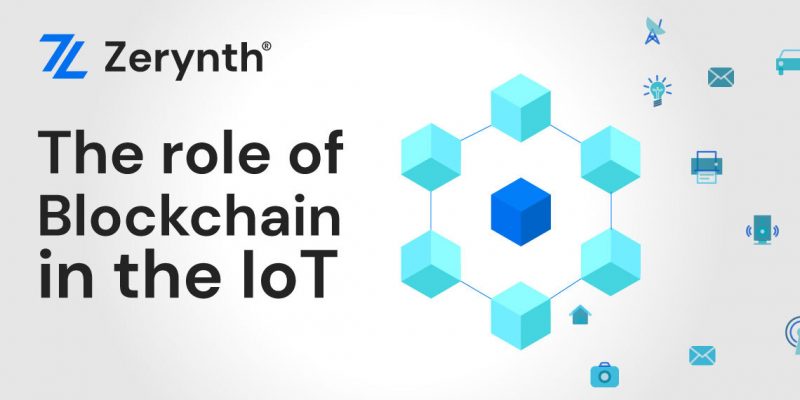The Role of Blockchain in Enhancing IoT Security and Efficiency

The Internet of Things (IoT) is a rapidly growing network of connected devices that can collect and exchange data. This data can be used to improve efficiency, productivity, and safety in a wide range of industries. However, the IoT also poses a number of security risks, as these devices can be vulnerable to hacking and other attacks.

Blockchain is a distributed ledger technology that can be used to enhance the security and efficiency of the IoT. Blockchain networks are secure because they are decentralized, meaning that there is no single point of failure that can be exploited by attackers. They are also transparent, meaning that all transactions are recorded on the blockchain and can be viewed by anyone.

Blockchain can be used to improve the security of IoT devices in a number of ways. For example, blockchain can be used to:
- Create a secure identity for each IoT device
- Store and manage sensitive data in a tamper-proof manner
- Track and monitor the activities of IoT devices
- Detect and respond to security threats
In addition to improving security, blockchain can also be used to improve the efficiency of the IoT. For example, blockchain can be used to:
- Automate the process of provisioning and managing IoT devices
- Optimize the use of resources by sharing data between IoT devices
- Create new revenue streams by allowing IoT devices to participate in the blockchain economy
Blockchain is a powerful technology that has the potential to revolutionize the IoT. By improving security and efficiency, blockchain can help to unlock the full potential of the IoT and make it a more secure and productive environment.
Here are some specific examples of how blockchain is being used to enhance IoT security and efficiency:
- VeChain: VeChain is a blockchain platform that is specifically designed for the IoT. VeChain provides a number of features that can improve the security and efficiency of IoT devices, including:
- A secure identity management system
- A tamper-proof data storage system
- A real-time monitoring system
- A threat detection and response system
- IOTA: IOTA is a blockchain platform that is optimized for the IoT. IOTA provides a number of features that can improve the security and efficiency of IoT devices, including:
- A lightweight distributed ledger
- A feeless transaction system
- A strong security model
- Ethereum: Ethereum is a blockchain platform that supports a wide range of applications, including IoT applications. Ethereum provides a number of features that can improve the security and efficiency of IoT devices, including:
- A smart contract system
- A decentralized storage system
- A strong developer community
These are just a few examples of how blockchain is being used to enhance IoT security and efficiency. As the IoT continues to grow and develop, it is likely that we will see even more innovative and groundbreaking uses for blockchain in the IoT space.## The Crucial Role of Blockchain in Enhancing IoT Security and Efficiency
Executive Summary
The ubiquitous and interconnected nature of IoT devices presents unique security and efficiency challenges. Blockchain, with its immutable, decentralized and auditable characteristics, emerges as a paradigm-shifting solution, revolutionizing the IoT landscape.
Introduction
The proliferation of IoT devices has catalyzed the digital transformation of various industries, from smart cities to healthcare. However, alongside the exponential growth and pervasion of IoT comes a daunting array of security and efficiency concerns, including data breaches, authentication issues, and performance bottlenecks. Blockchain technology offers a game-changing approach to mitigate these challenges, harnessing its unique features to boost IoT security, optimize performance, and facilitate seamless data exchange.
Key Areas of Blockchain’s Impact
1. Secure Data Management
- Cryptography-based encryption: Blockchain secures data in transit and at rest using state-of-the-art cryptographic algorithms.
- Immutable ledger: Data stored on the blockchain cannot be tampered with or retroactively altered, creating a verifiable and trustworthy record of transactions.
- Decentralization: Distributed data storage eliminates central points of failure, reducing the risk of data breaches and unauthorized access.
2. Enhanced Authentication
- Digital identity management: Blockchain provides a secure and reliable framework for managing digital identities, limiting unauthorized access to IoT devices and preventing identity theft.
- Biometric integration: Blockchain can be coupled with biometric technologies for advanced multi-factor authentication, ensuring only authorized individuals can access sensitive data.
- Tamper-proof audit trails: The immutability of blockchain records enables the creation of inviolable audit trails, providing incontrovertible evidence of device and user actions.
3. Optimized Efficiency
- Smart contract automation: Blockchain-based smart contracts automate processes, eliminating the need for manual intervention, reducing costs, and streamlining operations.
- Edge Computing: Blockchain can facilitate the integration of edge computing devices, enabling real-time data processing and decision-making closer to the physical IoT devices.
- Intelligent Resource Allocation: Blockchain can be leveraged to create self-managing IoT networks, where devices can autonomously allocate resources based on dynamic demand and constraints.
4. Seamless Data Exchange
- Interoperability and standardization: Blockchain provides a common platform for IoT devices from different vendors to communicate and share data seamlessly, breaking down data silos and fostering collaboration.
- Cross-Chain Communication: Newer blockchain platforms support interoperability features, enabling data exchange and smart contract execution across multiple blockchain networks.
- Data Exchange Facilitators: Emerging intermediaries, such as data exchanges and marketplaces, are being built on blockchain to facilitate secure and efficient data sharing among IoT devices and service providers.
Conclusion
Blockchain is not merely a buzzword; it is a transformative technology that is redefining IoT security and efficiency. By embracing blockchain’s unique capabilities, organizations can effectively address the critical challenges posed by the explosive growth of IoT. The integration of blockchain into IoT ecosystems will pave the way for a more secure, efficient, and frictionless connected world.
Tags
- Blockchain
- IoT Security
- IoT Efficiency
- Cryptocurrency
- Smart Cities
FAQs
-
Q: How does blockchain enhance IoT security?
-
A: Blockchain provides cryptography-based data encryption, an immutable ledger, and decentralization to mitigate security risks and ensure data integrity.
-
Q: What is the role of blockchain in IoT authentication?
-
A: Blockchain can manage digital identities, enable biometric integration, and provide tamper-proof audit trails for enhanced user authentication and access control.
-
Q: How does blockchain optimize IoT efficiency?
-
A: Blockchain supports smart contract automation, facilitates edge computing, and enables intelligent resource allocation to streamline operations and reduce costs.
-
Q: Can blockchain enable seamless data exchange in IoT?
-
A: Blockchain promotes interoperability, cross-chain communication, and facilitates data exchanges to enable the secure and efficient sharing of data across IoT devices and platforms.
-
Q: What are some real-world examples of blockchain use in IoT?
-
A: Blockchain is being used in smart cities for energy management, supply chain management, and waste management, among other applications.
